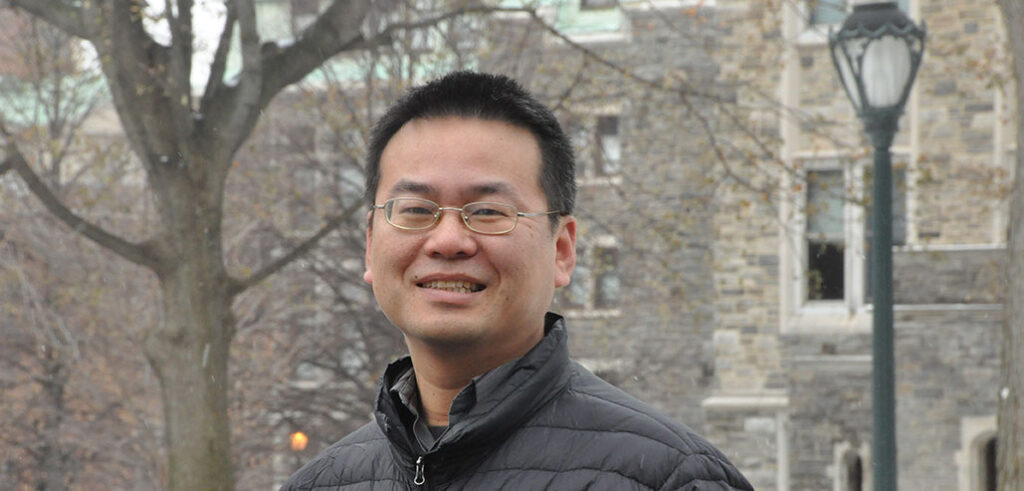The era of Big Data has brought a bounty of information about human genetics, stirring new hopes for early diagnosis and treatment of cancer and other diseases. But the data about human cells is as messy and idiosyncratic as humanity itself—and presents scientists with formidable riddles.
Now, a Fordham professor just may have cracked one of them.
Henry Han, Ph.D., has developed a novel method of identifying the genetic activity unique to complex diseases such as cancer. This “signal” holds out hope of overcoming a key barrier to obtaining cancer diagnoses from the treasure trove of genetics information developed in recent decades, said Han, and could “totally change” medicine.
“It’s so hard to (separate) the ‘noise’ from the true signals in big data. Previously, people didn’t know how to do that,” said Han, an associate professor in Fordham’s Department of Computer and Information Science.
For years, scientists found that although they could identify the genetic markers for different types of cancer, those markers differed from person to person, hindering the development of reproducible diagnostics and treatment, Han said.
New technologies known as RNA-Seq offer a possible solution by producing dramatically greater amounts of data about genes and RNA within a cell. But the data is “noisy” and hard to analyze, in part because of its sheer volume and because of errors that were baked into the data by the technology used to produce it.
In tackling this problem, Han devised an algorithm that relies on wavelets—a subtle tool for differentiating among pieces of genetic information and eliminating what he calls “red herrings” in the data.
Working with researchers from Columbia University and the University of California, San Diego, Han applied this algorithm to RNA-Seq data and found three “common denominator” genetic markers across multiple cases of breast cancer and prostate cancer, among other findings.
His research has been supported by National Institutes of Health grants, and he is seeking further funding to work with doctors and turn his computations into treatments that catch cancer or other diseases earlier than ever—that is, before symptoms even show up.


